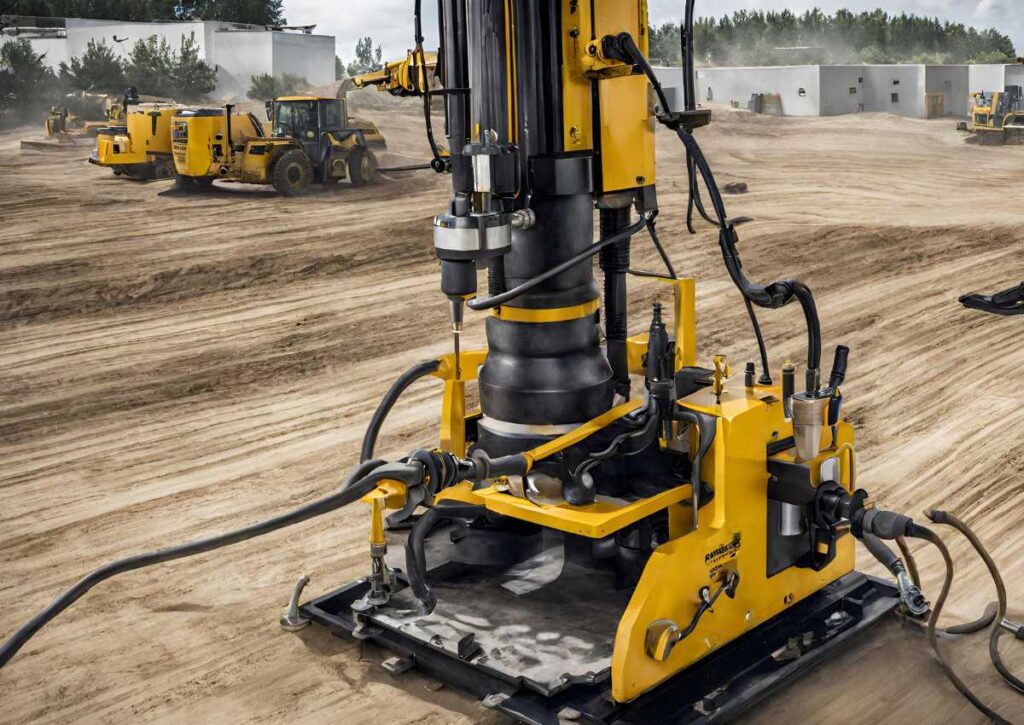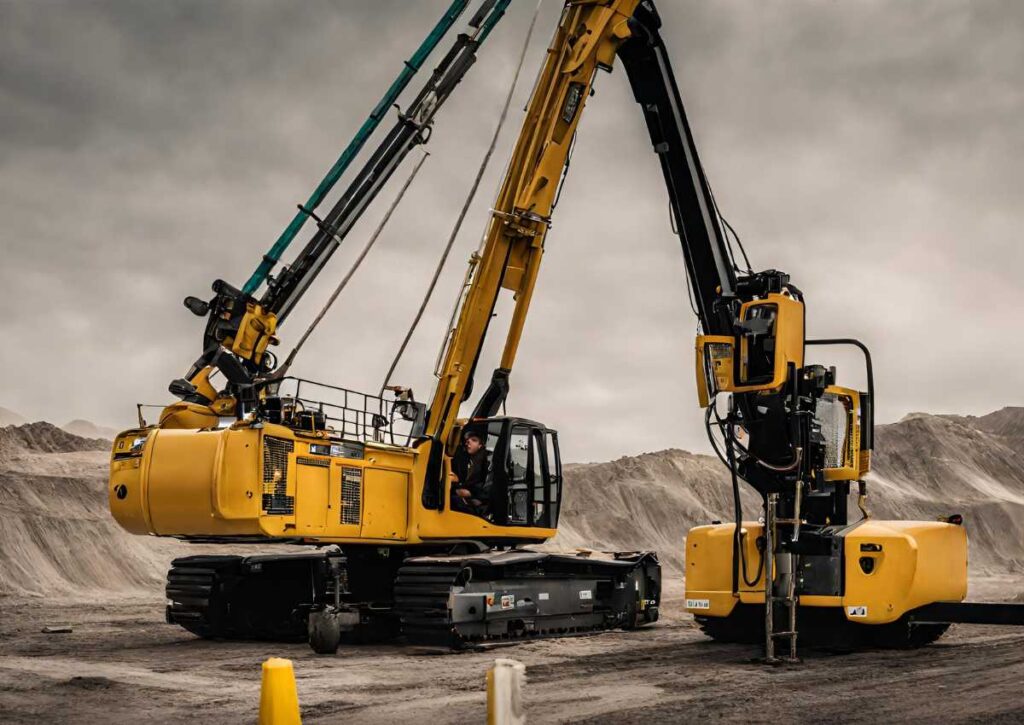Trace the evolution of drilling technology as we unravel the dynamic world of hydraulic drilling.
In this exploration, we’ll delve into its mechanics, advantages, and distinct features separating it from hydraulic fracturing and horizontal drilling.
Hydraulic drilling involves using pressurised fluid to power a drill, enabling efficient boring through hard surfaces like rock or soil.
Let’s embark on a journey to understand the transformative power of hydraulic drilling in construction and resource extraction.
Hydraulic Drilling
Imagine I handed you a massive drill, and instead of sweating it out, you effortlessly dug deep into the ground.
That’s a bit like hydraulic drilling—a high-tech way of boring holes in the earth for things like construction or pulling up valuable stuff like oil or gas.
How Does a Hydro Drill Work?

Alright, so here’s the scoop: I’m talking about a powerful drill hooked up to a supercharged system—the beating heart of the operation.
This system pushes a special fluid really hard, giving the drill the muscle it needs to bust through tough things like rock or soil. It’s like a superhero drill, and you’re the one in control.
Pros Of Hydraulic Drilling

Why should you care about this magic power drill? Not only is it strong, but it also makes my heart warm.
It lets us drill deeper and faster, making construction and resource extraction a breeze. And here’s the inspiring bit: it’s guilt-free.
Less noise, fewer emissions, making it a superhero for Mother Earth too!
Cons Of Hydraulic Drilling

But, hey, no character is whole. Some things don’t work right, like when the price gets a little high. It can get pricey to keep the tools in good shape.
There are times when the digging rate or the pressure drop is off. It is not always smooth, but it gets the job done. It’s like having the funniest little helper.
Hydraulic Fracturing vs. Horizontal Drilling
Different Goals
- Hydraulic fracturing aims to extract gas or oil by fracturing rocks underground.
- Horizontal drilling, on the other hand, involves drilling sideways once beneath the surface.
Hydraulic Fracturing Explained:
- It’s the process of cracking underground rocks to access trapped gas or oil reserves.
Focus of Horizontal Drilling
- Instead of going deeper, it goes sideways underground to access resources or create tunnels.
Primary Distinction
- Hydraulic fracturing deals with breaking rocks, while horizontal drilling involves directional drilling.
Conclusion
So, there you have it—the scoop on hydraulic drilling in plain ol’ English. It’s like the unsung hero of construction and digging.
Powerful, sometimes a bit funny, but definitely worth a salute for all the holes it digs and projects it completes.
Alright, time to hang up my digital pen. Until next time, keep exploring the wonders of science and technology!
FAQs
What distinguishes hydraulic drilling from traditional methods?
Hydraulic drilling utilises pressurised fluid to power the drill, allowing for more efficient and forceful drilling compared to conventional mechanical methods.
How does the hydraulic drill achieve such power?
The drill is connected to a system that pumps fluid at high pressure, transmitting immense force to the drill bit, enabling it to penetrate hard surfaces like rock or concrete.
What advantages does hydraulic drilling offer?
Hydraulic drilling excels in its ability to reach greater depths swiftly and precisely, making it indispensable in construction and resource extraction.
It’s also more environmentally friendly, producing less noise and emissions.
Are there any drawbacks associated with hydraulic drilling?
Despite its prowess, hydraulic drilling can be costly due to the expensive equipment and maintenance required.
How does hydraulic drilling differ from horizontal drilling in practical terms?
While hydraulic drilling uses pressurised fluid for vertical drilling, horizontal drilling involves steering the drill bit sideways underground to access resources or create tunnels.
They serve different purposes in drilling operations.









